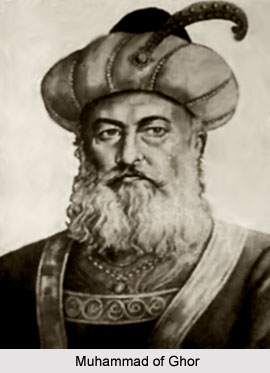 The First Battle of Tarain, also known as the First Battle of Tararoi, was fought in 1191. It was fought in the town of Tarain, near Thanesar between Ghurid force led by Mu`izz al-Din and a Chauhan Rajput army led by Prithviraj Chauhan. Muhammad Ghori, after winning this battle against Prithviraj, defeated Jayachandra in the Battle of Chandawar and destroyed Buddhism in that region. Then in 1202 his army put the occupation of Hinduism to an end by taking the province of Bengal.
The First Battle of Tarain, also known as the First Battle of Tararoi, was fought in 1191. It was fought in the town of Tarain, near Thanesar between Ghurid force led by Mu`izz al-Din and a Chauhan Rajput army led by Prithviraj Chauhan. Muhammad Ghori, after winning this battle against Prithviraj, defeated Jayachandra in the Battle of Chandawar and destroyed Buddhism in that region. Then in 1202 his army put the occupation of Hinduism to an end by taking the province of Bengal.
The First Battle of Tarain
The first move was taken by Muhammad Ghori who captured till the border of Prithviraj`s kingdom. In 1191 Muhammad captured either the Sirhind or Bhatinda fortress (which is now in Punjab) in Prithviraj`s northwestern frontier. The next step was taken by Prithviraj who along with his vassal Govinda-raja of Delhi rushed to save the frontier and the two armies met at Tarain.
The Rajput armies first defeated the two wings of the Muslim army. The Muslim army fled while Muhammad still remained in the center with the rest of the Turk soldiers. It was then Govind-raja and Muhammad of Ghori came face to face. The two were injured with repeated clashes. Muhammad could not recover from the blow and fainted from the shock. Fearing that their leader had died the army surrendered to Prithviraj and Muhammad was made a prisoner. He was brought in chains to Pithoragarh, Prithviraj`s capital. Muhammad of Ghori begged for mercy and Prithviraj inspite of repeated warnings from his ministers pardoned him.
The Second Battle of Tarain
Muhammad returned to his capital at Ghazni and the following year challenged Prithviraj once again in the Second Battle of Tarain. After reaching Lahore, he demanded for Prithviraj"s submission, but Chauhan ignored the order. Prithviraj issued a fervent appeal to his fellow Rajput chiefs to come to his aid against the Muslim invader. During the second battle, Rajput army consisted of 3,000 elephants, 300,000 cavalry and infantry whereas Mu`izz al-Din brought 120,000 fully armored men to battle. The battle took place on the same battle field like the first one. After Prithviraj Chauhan got defeated in the battle, he was captured from there.



















